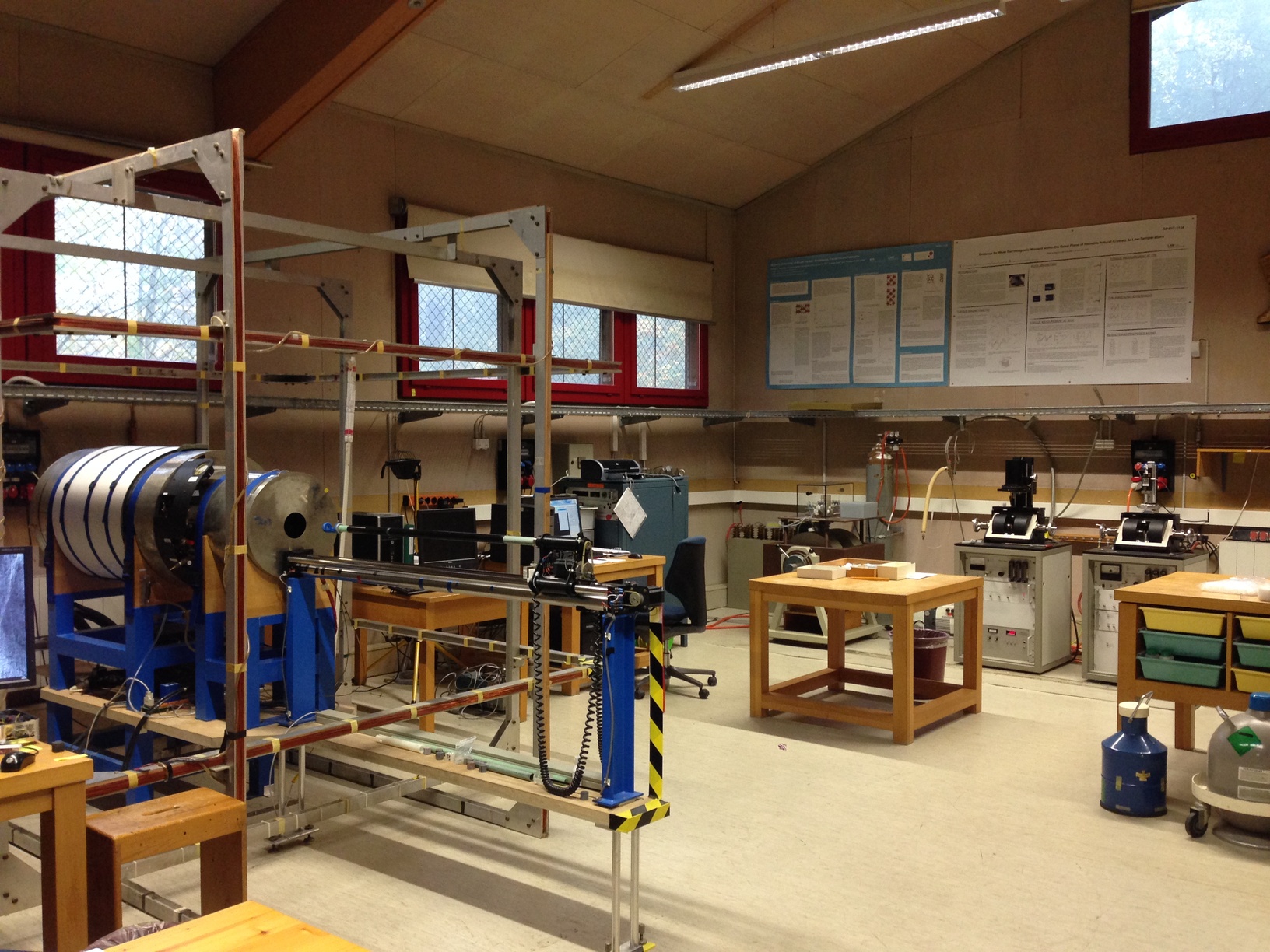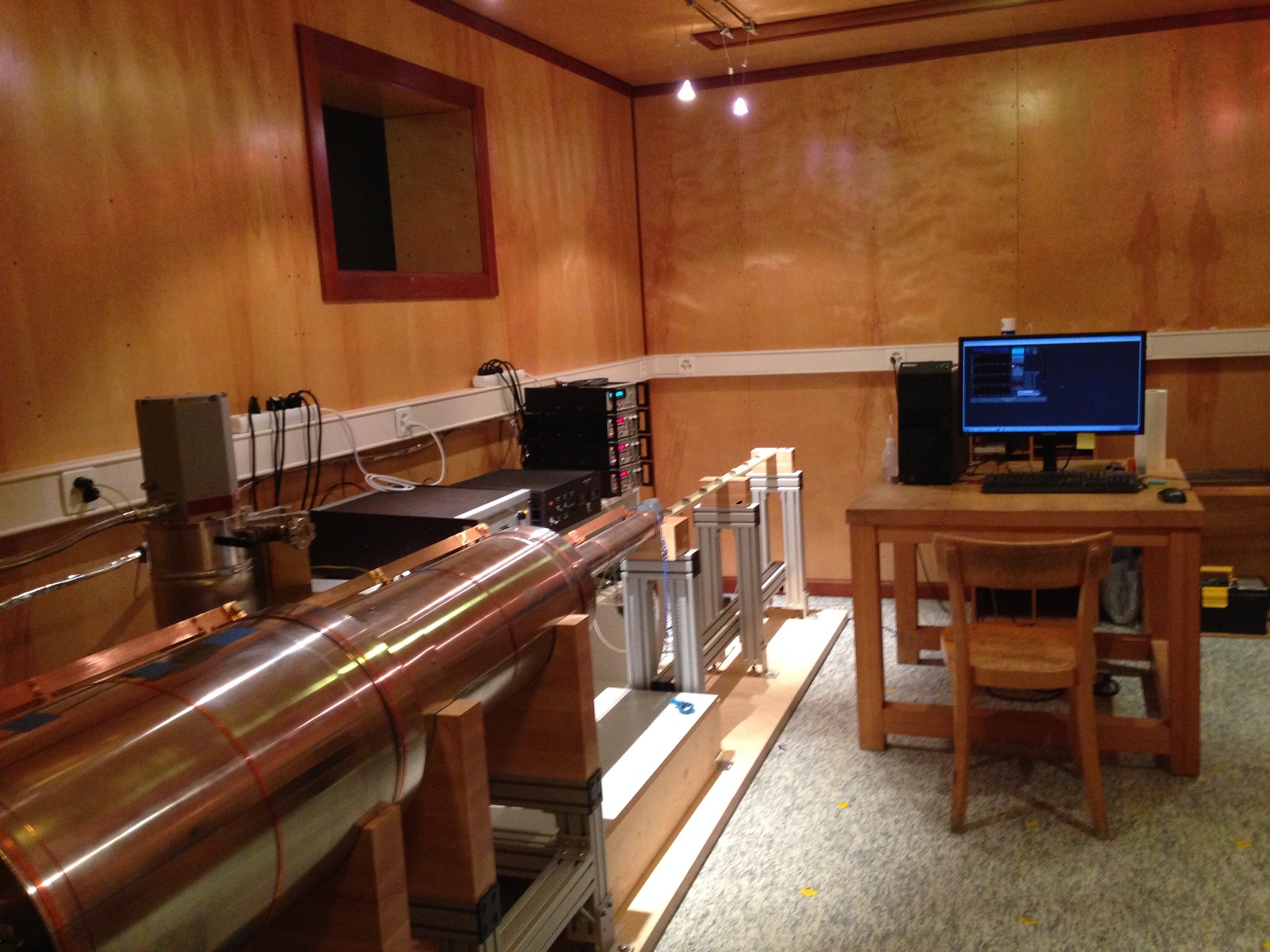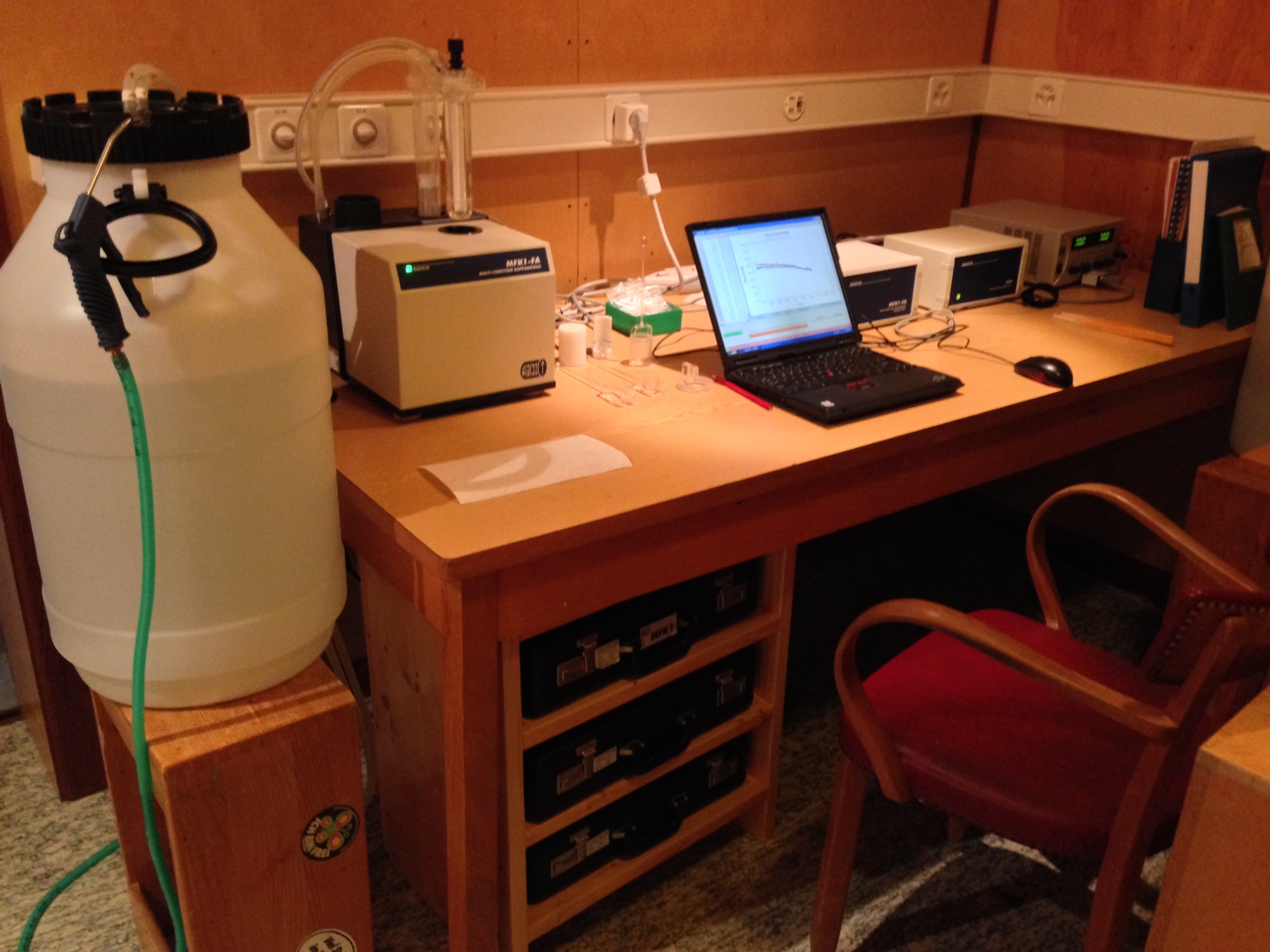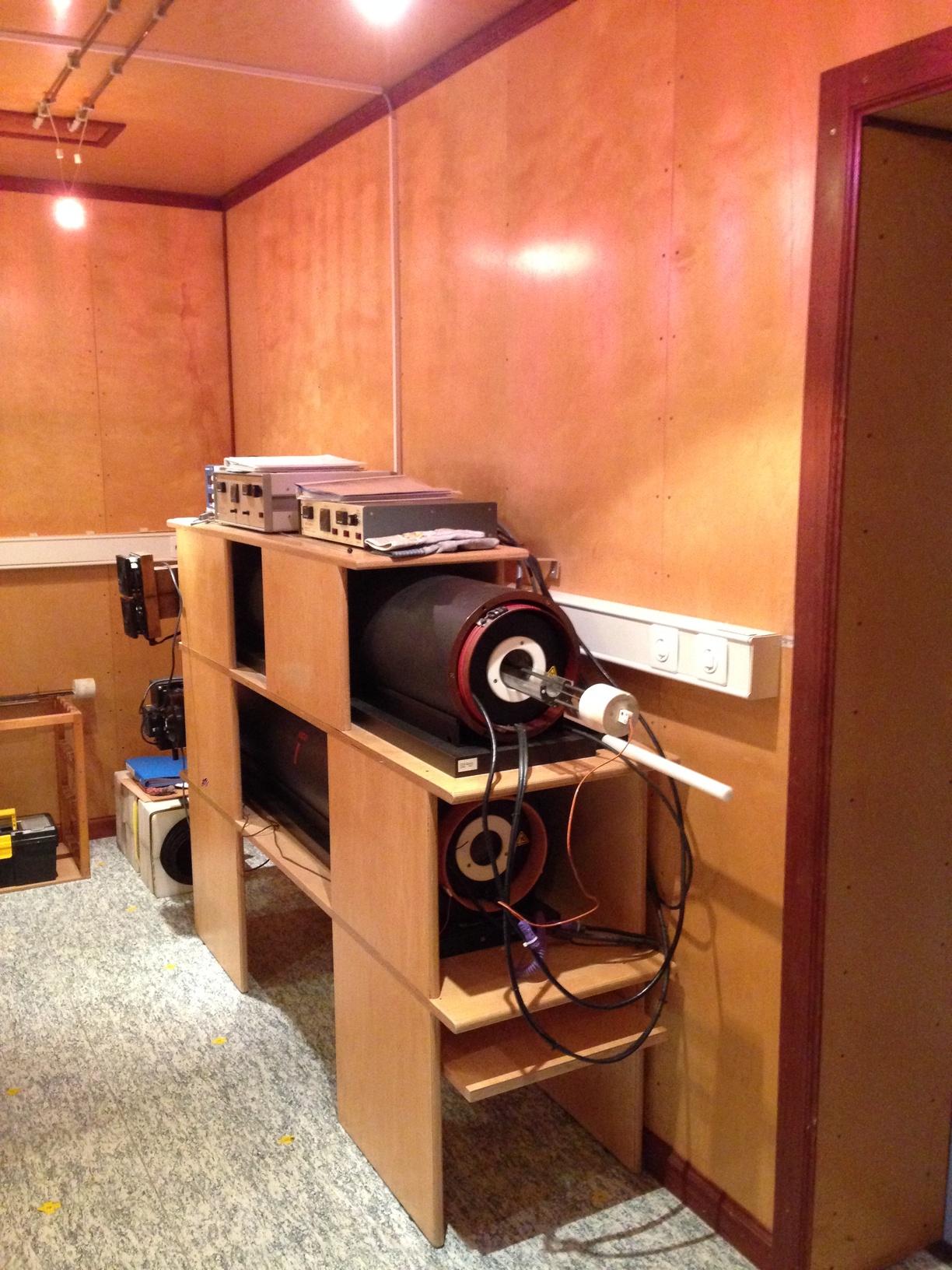Shielded room
A magnetically shielded room (6 m x 4 m x 2.5 m), built by Lodestar Magnetics Inc., Oakland, CA 94608, USA, fills about one third of the research hall. It is constructed using two walls of high permeability transformer steel, which reduces the ambient field to a value < 1000 nT. The spacious room has a window that provides natural light and helps improve ventilation in summer.
This room contains the instruments listed below:
SQUID is the abbreviation for Superconducting QUantum Interference Device
It consists of a superconducting ring that is interrupted in one place (rf-SQUID) or in two places (dc-SQUID) by a normal conductive or electrically isolating material. The gaps have to be very thin so that superconducting electron pairs (the Cooper-pairs) are able to tunnel the gap. Such tunnel contacts are called Josephson-contacts.
ARM is the abbreviation of Anhysteretic Remanent Magnetization. This type of magnetization is achieved by reducing the intensity of an alternating magnetic field in the presence of a small DC-bias field.
A 2G Enterprises, model 755, 3-axis, DC-SQUID rock magnetometer (WSGI/Applied Physics) is housed in the shielded room. It has a 3-axis degauseer, DC coil for ARM acquisition, and long-core sample handler.
SQUIDs are used to measure the very weak remanent magnetizations of materials, normally rocks or sediments. They have a sensitivity of much less then one flux quantum (2*10-15 Wb corresponding to a magnetic moment m= ca. 3*10-5 EMU or m= ca. 3*10-8Am2). A standard cylindrical rock sample has a diameter of 25.4 mm and a length of 22 mm.
The AGICO MFK1-FA Kappabridge is designed for measuring magnetic susceptibility and susceptibility anisotropy. It allows applied fields between 2 A/m and 700 A/m and has three frequencies: 976 Hz, 3904 Hz, and 15616 Hz. A CS-3 oven is available for measuring susceptibility as a function of temperature between 20 °C and 700 °C. A CS-L crysostat is available for measuring susceptibility as a function of temperature between -196 °C and 20 °C.
The basic principle of the instrument is that of a high-precision, semi-automatic autobalance, inductivity bridge. It is equipped with automatic compensation of thermal drift.



